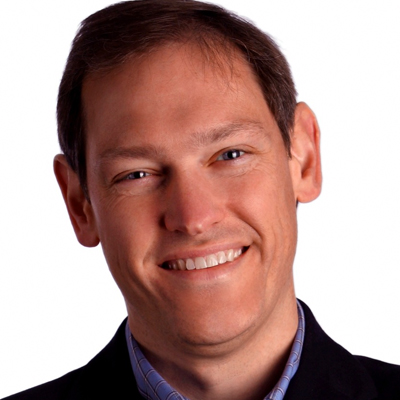Green chemical processes and energy production
Since the Industrial Revolution, we have continued to enjoy the benefits of manufactured and processed material goods with little concern for the environmental side-effects. Environmental concerns and climate change have only recently gained widespread public attention - beginning in the early 1970's. Dr. Shannon Stahl is using his extensive training in chemistry to research the chemistry of oxygen and search for ways to maintain the enjoyable and comfortable lifestyle we have come to enjoy without sacrificing the environment's health, and therefore ultimately our existence. Nearly all non-organic materials used in industry are derived from petroleum-based feedstocks, or building blocks, through a series of chemical reactions that often produce pollution and harmful chemical waste products that require expensive techniques for cleanup or disposal. Dr. Stahl is using the chemical properties of oxygen to refine current manufacturing practices, offer greener alternative processes, and contributing to the development of renewable energy technologies, such as fuel cells. His research is offering us the ideal solution -- maintain our comfortable lifestyle while keeping the environment's health intact. The solutions being devised in Dr. Stahl's lab will allow us to uphold our manufacturing capacities while reducing pollution. Further, it will establish sustainable methods for producing goods and electricity that will alleviate pressures for future generations.
Dr. Shannon Stahl, John and Dorothy Vozza Research Professor of Chemistry, in the Chemistry Department at the University of Wisconsin-Madison, is exploring methods of utilizing the chemistry of oxygen in environmentally benign methods to produce useful materials, ranging from pharmaceuticals to advanced polymers. The combination of oxygen and organic chemicals or fuels often leads to combustion; however, Dr. Stahl is working to control the chemistry of oxygen for use as a green chemical in material conversion processes. The key to this effort is the development of catalysts that allow the chemistry of oxygen to be controlled to generate useful products, rather than combustion. Understanding how to control the chemistry of oxygen will allow Dr. Stahl to impact the applications of feedstock conversion and make the processes more efficient, sustainable, and environmentally friendly.
All of Dr. Stahl's current research projects focus on the chemistry of oxygen, specifically harnessing oxygen in environmentally benign chemical transformations and energy-conversion methods.
-
Working in close collaboration with the pharmaceutical industry, Dr. Stahl is working to develop green catalytic transformations for the green production of new medicines. Pharmaceuticals are typically derived from multi-step recipes that convert building blocks (often derived from petrochemicals) into desired molecules. These processes often generate large amounts of chemical waste, including heavy metals, chlorinated solvents, and other toxic materials, as by-products. Dr. Stahl is developing methods to utilize oxygen in some of those steps to achieve greener manufacturing processes that produce only water as a by-product. This work has been recognized by the United States Environmental Protection Agency in their awarding Dr. Stahl the 2014 Presidential Green Chemistry Award.
-
Dr. Stahl is also exploring ways to use biomass-derived building blocks, rather than petrochemicals, as industrial feedstocks. Biomass consists of biological materials such as corn stalks, tree trunks, and other plant materials that have the benefits of being both renewable and environmentally friendly. Five to ten percent of the crude oil imported into the US is converted into chemicals that end up in our everyday products. By replacing petroleum with building blocks from nature, i.e., biomass waste, we can get the benefits of synthetic materials without heavily polluting the environment by using renewable and sustainable feedstocks.
-
Renewable energy is crucial to our national security, and fuel cells are a fundamental component in the transportation sector. Most vehicles are powered by combustion engines, which intake chemical energy (gasoline), ignite it, and use the fuel combustion to power pistons inside the engine. This process converts chemical energy into mechanical energy, which can also be used to generate electrical energy. This process is inefficient though: much of the potential energy is wasted as heat. Fuel cells follow similar chemical principles, but they use oxygen to convert a fuel, such as hydrogen or methanol, directly to electrical energy. By skipping the middle-step of mechanical energy conversion, fuel cells are much more efficient than traditional combustion engines. Additionally, they produce only water as a waste product rather than the slew of harmful gases emitted from combustion engines. Current fuel cells, however, are still too inefficient in their use of oxygen to be implemented in commercial vehicles. Dr. Stahl is investigating how to overcome this inefficiency in the oxygen chemistry.
Bio
It seems unlikely that an individual would become a professor with neither parent receiving a four-year college education, but that is precisely the series of events that preceded Dr. Stahl's academic career. Upon entering college, it was never evident to him that he would end up in academia: it was always his goal to earn a Bachelor's degree in engineering and enter industry. He did, however, always have a special interest in chemistry stemming from outstanding high school teachers. This interest in chemistry was further heightened while pursuing his undergraduate degree at the University of Illinois at Urbana-Champaign. Chemistry provides answers to some of nature's finest mysteries; the field offered Dr. Stahl answers to the "but why..." questions he was constantly pondering. He considers chemistry to be the ideal mixture of mathematical and descriptive science, and offers chemists the opportunity to be both physically rigorous while still expressing creativity.
Despite his parents' limited academic background, they provided him strong encouragement, and Dr. Stahl decided to continue his passion for learning by obtaining a Ph.D. in chemistry. It was only late in his graduate education, however, that he began to take seriously the thought of being a professor. At a critical moment, Dr. Stahl's research advisor suggested he consider a career in academia. He loved chemistry as well as the academic environment, and the idea of spending his career working with young and energetic students invigorated him. At this point, he decided to pursue a postdoc after receiving his Ph.D. and give the academic career path a try. It was through this series of events that Dr. Stahl continues to love the study of chemistry and finds himself in the faculty position he now holds.


